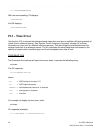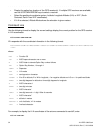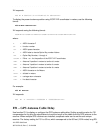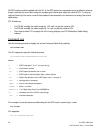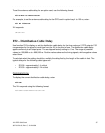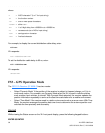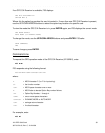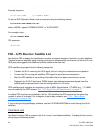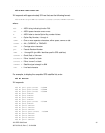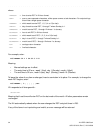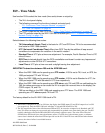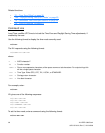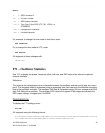
60 XLi IEEE 1588 Clock
997-01510-03, Rev. C, 12/12/2006
SSSSSSSSSSSS SSSSSSSSSS SSSSSSS S SSS S SSSSS S
1
Example response:
F53 B1 AUTO MODE (or DYNAMIC MODE)
To set the GPS Operation Mode, enter a command using the following format:
F53<SP>B<N><SEP><MODE><CR><LF>
where <MODE> equals “DYNAMIC MODE” or “AUTO MODE”.
For example, enter:
F53 B1 DYNAMIC MODE
F53 responds:
OK<CR><LF>
F60 – GPS Receiver Satellite List
Use function F60 to display the identification number and signal strength of tracked or current satellites.
‘Tracked’ means a satellite’s signal is being received and interpreted by the receiver (or that the XLi has
GPS data that suggests this satellite should be visible to the antenna).
GPS satellite are grouped into the following categories:
• Tracked: the XLi is receiving the GPS signal, but isn’t using it to calculate time and position.
• Current: the XLi is using the satellite’s GPS signal to calculate time and position.
• Bad: the GPS satellite is transmitting information that it has been removed from service.
• Rejected: the XLi M12 receiver’s TRAIM feature has detected anomalous signals from this
satellite and has quarantined it from the timing solution for 12 hours.
GPS satellite signal strengths are reported in units of dBW. Signals below -170 dBW (e.g., -171 dBW)
are not usable by the GPS receiver. See “
GPS Signal Strength Requirements” on page 17.
If multiple GPS receivers are installed in the XLi, F60 identifies the GPS receiver by the option bay
number in which it is located. For a diagram of option bay numbers, see “
F118 – Option Board
Configuration” on page 108.
If you’re using the keypad/display interface, use the UP/DOWN ARROWs to scroll through the list of
satellites.
Command Line
Use Serial Function F60 to request a list of all, current, and tracked satellites. To display the list, enter a
string using the following format:



